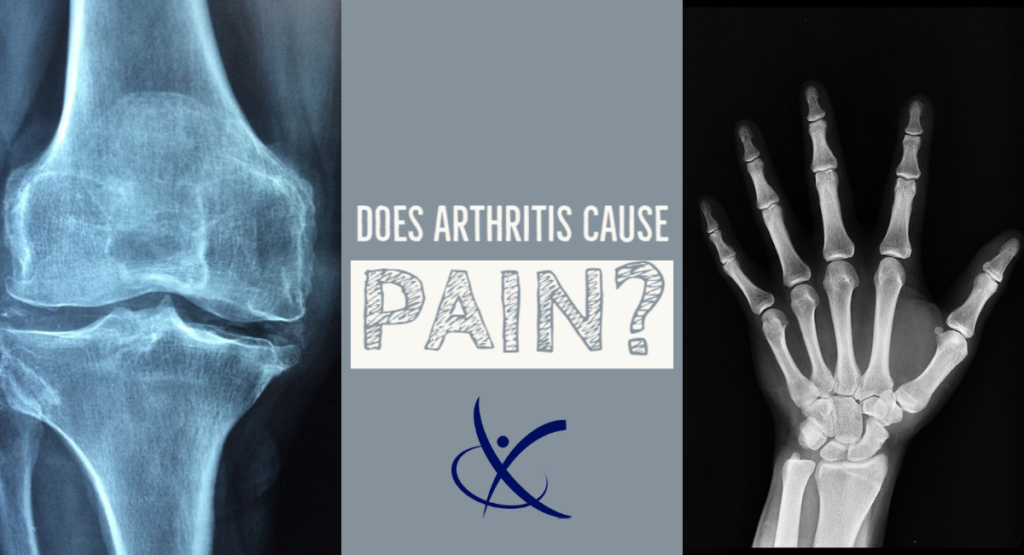Does Arthritis Cause Pain?
Why your newfound “arthritis” may not be the culprit.
For many, being diagnosed with arthritis is like being told a death sentence. What a lot of people fail to realize, is that developing arthritis is a normal part of the aging process and sometimes comparable to wrinkling skin and greying hair. However, the pain, stiffness, and weakness often associated with an arthritis diagnosis are not.
I have had numerous clients walk in the office over the years listing their arthritic body parts. When chatting about their pain experience, things do not always add up. For example, one day I had a middle-aged runner enter my clinic with a random & acute onset of right knee pain. On X-ray, she was told that she had mild to moderate arthritis in both knees. So, why does one knee hurt, and the other does not?
Arthritis pain and dysfunction take time to develop. Typically, it is not something that pops up randomly and becomes painful or stiff overnight (Disclaimer: this may not be the case for those with diagnoses such as rheumatoid arthritis or psoriatic arthritis in an active flare-up). Gradually worsening pain that becomes more chronic and consistent can be correlated to arthritic conditions. However, if you’ve been pain-free doing activity and all of a sudden you experience a new onset of hip, knee, or other joint pain, it is unlikely related to arthritic changes and more than likely related to the supporting structures around the joint (muscles, tendons, cartilage, bones, nerves, etc.).
Acute pain is typically not representative of arthritis and likely due to things such as muscle strains, ligament sprains, and overuse! Sometimes I hear people say, “I was diagnosed with arthritis years ago, but I really don’t have much pain. It typically takes me doing something stupid to feel it.” Well, folks, if we looked for the logical cause of pain in this statement it is typically not the arthritis, but the “something stupid” that more than likely caused irritation of muscles, tendons, nerves, etc.
Doing more activity than normal (walking more, lifting more, raking more) are all common causes of overuse injuries. Many individuals often mistake arthritis pain for overuse discomfort. Therefore, people often contribute arthritis pain to their activities. Our bodies must be prepared to handle the tasks we throw at them. I often have individuals enter the clinic who have avoided doing certain activities for years secondary to a diagnosis of arthritis or pain that was once associated with a certain activity. They then go and try to walk through Disney World or get up a flight of stairs to get to their granddaughter’s dance recital and insert the onset of pain. Is it simply arthritis causing this discomfort? I doubt it.
Avoidance of activity secondary to arthritis is a leading cause of disability. What is interesting, is that research shows exercise is one of the best ways to defeat pain and stiffness associated with arthritis. Exercise is also reported to be anti-inflammatory. So, why do people let movement decline happen?
Strengthening and continuing to move the structures around an arthritic joint are two often ignored components when battling arthritis. Instead, individuals typically sense any pain as negative and ignore activity. Ignoration of movement increases the negative effects associated with a diagnosis of arthritis including pain, stiffness, and weakness. It also compounds creating fear and disability as one begins to enter the negative feedback loop of the Fear Avoidance Model (read more here).
Even if you are not someone who likes to exercise, try to slowly reincorporate movement daily. Work on standing up and sitting down from a chair several times per day or add in some mini squats at the kitchen sink. Start a walking program of even one minute at a time or work on climbing the stairs one step at a time! Often, the pain and stiffness associated with arthritis are secondary to impaired mobility and strength rather than arthritis itself.
So, use this information wisely and remember, acute pain doesn’t equate to arthritis pain, arthritis likes movement, lack of movement can cause pain, being fearful of movement can cause disability, and last but not least, arthritis is not always painful.
Arthritis is often frustrating and debilitating, but it does not always have to be. If you need assistance or have any questions regarding this topic, please do not hesitate to ask!
Ashley Witson, PT, DPT
